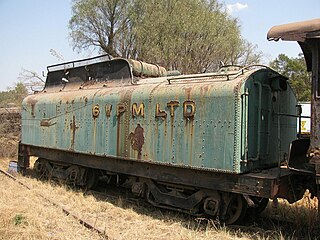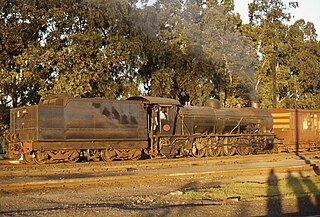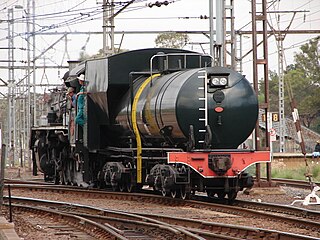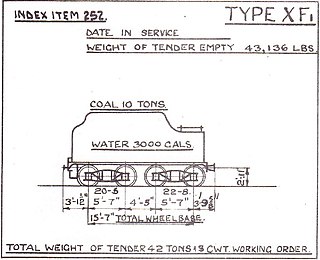SAR dimensional drawing | |||||||||||||||||||||||||
| |||||||||||||||||||||||||
| |||||||||||||||||||||||||
| |||||||||||||||||||||||||
The South African type SK tender was a steam locomotive tender.

A tender or coal-car is a special rail vehicle hauled by a steam locomotive containing its fuel and water. Steam locomotives consume large quantities of water compared to the quantity of fuel, so their tenders are necessary to keep them running over long distances. A locomotive that pulls a tender is called a tender locomotive. Locomotives that do not have tenders and carry all their fuel and water on board the locomotive (itself) instead are called tank locomotives.
Contents
Type SK tenders were rebuilt from Type SH tenders which had entered service in 1904 and 1905. The rebuilding resulted in a tender with a larger water tank and larger coal bunker. [1] [2]
The South African type SH tender was a steam locomotive tender from the pre-Union era in the Natal Colony.
















